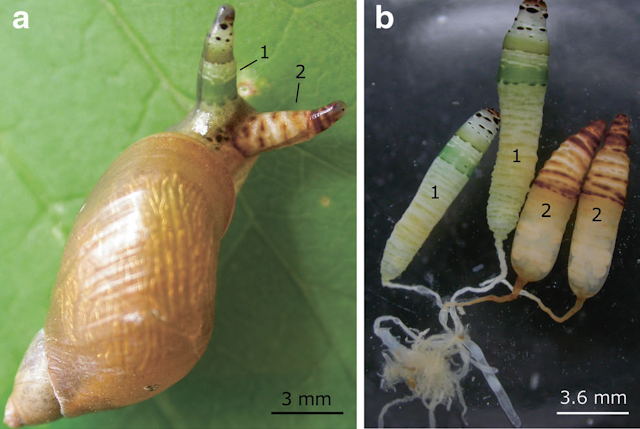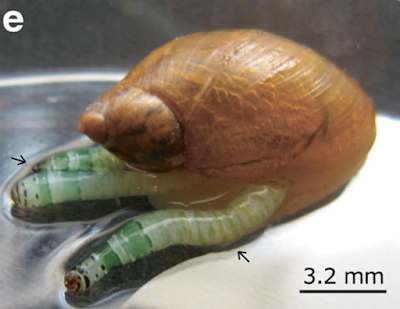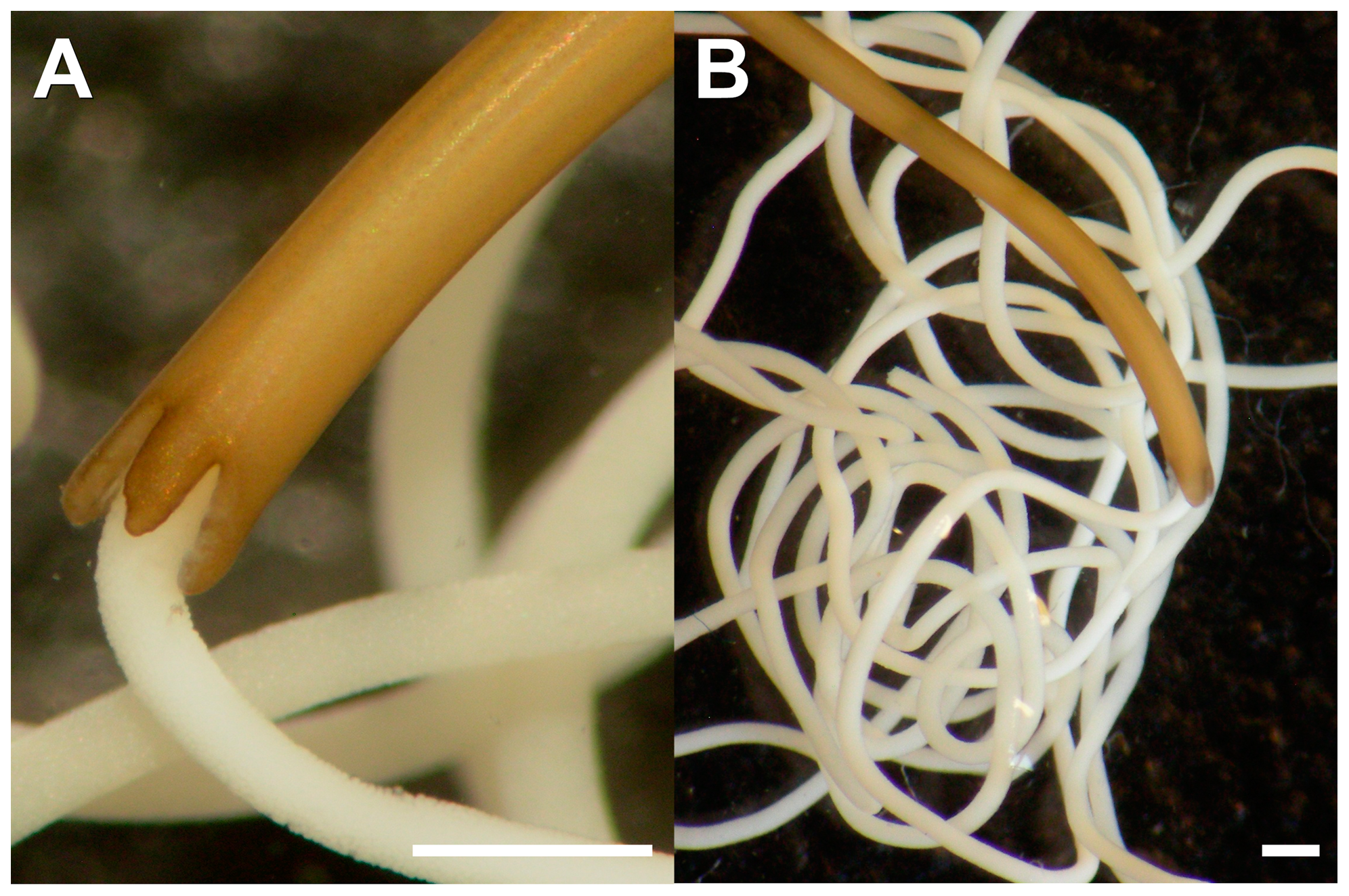
These Leucochloridium parasites infest a snail, build a massive complex of tunnels and breeding chambers, taking up about 1/3 of the snail's body. The colorful "worms" in the snail's eyestalks are not worms at all. Instead, they are massive "brood sacs" filled with little parasites.
They need to get eaten by a bird, their final host, to complete their journey.

If a bird doesn't come to peck off the "worms", they can even crawl out on their own, so they could be picked up by a bird...
World's longest parasite, living in blue whale placentas.
Placentanema gigantissma, and it is indeed a gigantic worm. The female worm can reach up to 8.4 m long, while the smaller male reach "only" 3.75 m in length.
Hairworm in praying mantis.

Reminder that sometimes, a parasite does not want to be eaten. For certain wasps, they parasitize berries, and they prevent the berry from appearing ripe, so that birds won't peck at them.
It's unclear why the hairworms tie themselves into knots. However, they can be very, very impatient, sometimes tying themselves into knots while they were still crawling out of a cricket!
I found some very... aesthetic photos of hairworms in Gordius villoti (Nematomorpha) life cycle in relation with caddis fly larvae (1988), which fortunately is open access!
 |
| Gordius villoti (Nematomorpha) life cycle in relation with caddis fly larvae (1988) |
 |
| 13: eggs spilling out of a female that is being cut in half. 14, 15: the eggs, some with larvae hatching, and fully hatched larvae. |
This particular species of horsehair worms is the only known species of horsehair worms that is parthenogenic, meaning it's a species of asexual self-replicators (sometimes they are called "all-female", but I think "female" doesn't mean anything for an asexual species). Its name is Paragordius obamai, named after president Barack Obama, because it was found in Kenya, near the village where Obama's father was born.
 |
| Source: Wikipedia |
More good pictures from Thorp and Covich’s Freshwater Invertebrates.
... some hosts, such as zebras, can harbor up to 20 species and over a million total worms per animal.
 |
| Scanning electron microscope image of the mouth of Equinurbia blakei |
Also, this cool mouth reminds me of something...
 |
| Source |
Oh right. The typewriter writing head.



No comments:
Post a Comment